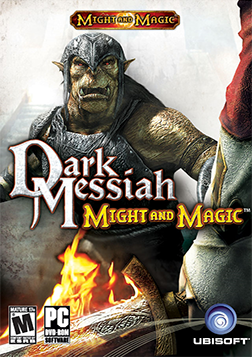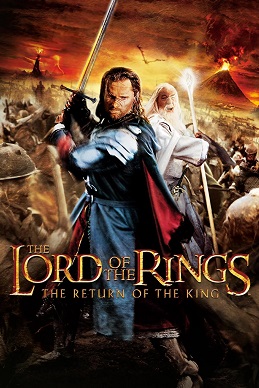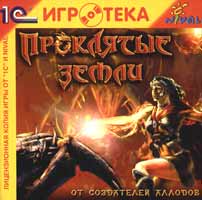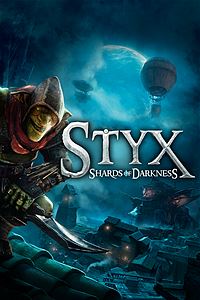
Warcraft III: Reign of Chaos is a high fantasy real-time strategy computer video game developed and published by Blizzard Entertainment released in July 2002. It is the second sequel to Warcraft: Orcs & Humans, after Warcraft II: Tides of Darkness, the third game set in the Warcraft fictional universe, and the first to be rendered in three dimensions. An expansion pack, The Frozen Throne, was released in July 2003. Warcraft III is set several years after the events of Warcraft II, and tells the story of the Burning Legion's attempt to conquer the fictional world of Azeroth with the help of an army of the Undead, led by fallen paladin Arthas Menethil. It chronicles the combined efforts of the Human Alliance, Orcish Horde, and Night Elves to stop them before they can corrupt the World Tree.
The Elder Scrolls is a series of action role-playing video games primarily developed by Bethesda Game Studios and published by Bethesda Softworks. The series focuses on free-form gameplay in an open world. Morrowind, Oblivion and Skyrim all won Game of the Year awards from multiple outlets. The series has sold more than 58 million copies worldwide.

Drizzt Do'Urden is a fictional character appearing in the Forgotten Realms campaign setting for the Dungeons & Dragons fantasy role-playing game. Drizzt was created by author R. A. Salvatore as a supporting character in the Icewind Dale Trilogy. Salvatore created him on a whim when his publisher needed him to replace one of the characters in an early version of the first book, The Crystal Shard. Drizzt has since become a popular heroic character of the Forgotten Realms setting, and has been featured as the main character of a long series of books, starting chronologically with The Dark Elf Trilogy. As an atypical drow, Drizzt has forsaken both the evil ways of his people and their home in the Underdark, in the drow city of Menzoberranzan.
Al-Qadim is a campaign setting for the Dungeons & Dragons role-playing game which was developed by Jeff Grubb with Andria Hayday for TSR, Inc., and was first released in 1992. Al-Qadim uses One Thousand and One Nights as a theme and is set in the land of Zakhara, called the Land of Fate. Thematically, the land of Zakhara is a blend of the historical Muslim Caliphates, the stories of legend, and a wealth of Hollywood cinematic history. Zakhara is a peninsula on the continent of Faerûn in the world of Toril, the locale of the Forgotten Realms campaign setting, although Al-Qadim is designed to stand on its own or be added to any existing campaign setting. The basic campaign setting was divided between two game products: Al-Qadim: Arabian Adventures, a sourcebook describing character creation rules, equipment, and spells unique to the setting, and Al-Qadim: Land of Fate, a boxed set describing the land of Zakhara, with separate sourcebooks for the players and the Dungeon Master.

The Lord of the Rings: The Battle for Middle-earth II is a 2006 real-time strategy video game developed and published by Electronic Arts. The second part of the Middle-earth strategy game series, it is based on the fantasy novels The Lord of the Rings and The Hobbit by J. R. R. Tolkien and its live-action film series adaptation. It is the sequel to Electronic Arts' 2004 title The Lord of the Rings: The Battle for Middle-earth. Along with the standard edition, a Collector's Edition of the game was released, containing bonus material and a documentary about the game's development.

Dark Messiah of Might and Magic is a first-person action role-playing game developed by Arkane Studios. The player controls Sareth, the apprentice of the wizard Phenrig, after he is sent to the city of Stonehelm to accompany an expedition trying to retrieve a powerful artifact known as "The Skull of Shadows".

The Lord of the Rings: The Return of the King is a 2003 hack and slash action game developed by EA Redwood Shores for the PlayStation 2 and Windows. It was ported to the GameCube and Xbox by Hypnos Entertainment, to the Game Boy Advance by Griptonite Games, to mobile by ImaginEngine, and to Mac OS X by Beenox. The game was published by Electronic Arts. It is the sequel to the 2002 game The Lord of the Rings: The Two Towers.

Valkyrie Profile is a role-playing video game developed by tri-Ace and published by Enix for the PlayStation. It was released on December 22, 1999 in Japan and on August 29, 2000 in North America. Inspired by Norse mythology, Valkyrie Profile follows the titular valkyrie, Lenneth, as she travels through Midgard, collecting the souls of slain heroes to serve either as einherjar or her personal companions for Ragnarok - the battle to decide the fate of all creation - and trains them by fighting monsters and performing additional quests. As she journeys, she learns more about her original human life, removed from her memory upon becoming a Valkyrie.

Orcs & Elves is an adventure role-playing video game for the mobile phone and Nintendo DS. It was developed by id Software and Fountainhead Entertainment and published by EA Mobile and licensed by Nintendo for the DS version. It was released for mobile phones in May 2006 before being ported to the Nintendo DS in November 2007. The game is based on Doom RPG's engine and is id's first original intellectual property since Quake. The DS port of the game included graphical enhancements, such as 3D environments and camera cutscenes, along with improved character sprites, two new levels and the use of the touchscreen feature.

Evil Islands: Curse of the Lost Soul, or simply Evil Islands, is a PC game by Nival Interactive that combines role-playing, stealth, and real-time strategy. Evil Islands introduces a new interface and full 3D graphics.
An orc, in J. R. R. Tolkien's Middle-earth fantasy fiction, is a race of humanoid monsters, which he also calls "goblin".

The Lord of the Rings: War in the North is a 2011 action role-playing hack and slash video game developed by Snowblind Studios and published by Warner Bros. Interactive Entertainment for PlayStation 3, Xbox 360, and Microsoft Windows. An OS X port was developed and published by Feral Interactive in 2013. It is the first video game based on both J. R. R. Tolkien's 1954 high fantasy novel The Lord of the Rings and Peter Jackson's film trilogy adaptation released in 2001, 2002 and 2003. This is because, until 2009, Vivendi Universal Games, in partnership with Tolkien Enterprises, held the rights to make games based on Tolkien's literary works, whilst Electronic Arts held the rights to make games based on the New Line Cinema films. In 2009, WB Games acquired the rights for both intellectual properties.

Magicka is an action-adventure game developed by Swedish independent developer Arrowhead Game Studios. It was released via Steam for Microsoft Windows on January 25, 2011.

Warcraft II: Tides of Darkness is a fantasy real-time strategy computer game developed by Blizzard Entertainment and released for MS-DOS and Microsoft Windows in 1995 and Mac OS in 1996 by Blizzard's parent, Davidson & Associates. A sequel to Warcraft: Orcs & Humans, the game was met with positive reviews and won most of the major PC gaming awards in 1996. In 1996, Blizzard released an expansion pack, Warcraft II: Beyond the Dark Portal, for DOS and Mac OS, and a compilation, Warcraft II: The Dark Saga, for the PlayStation and Sega Saturn. The Battle.net edition, released in 1999, included Warcraft II: Beyond the Dark Portal, provided Blizzard's online gaming service, and replaced the MS-DOS version with a Windows one.

Of Orcs and Men is a fantasy action role-playing game developed by Cyanide and Spiders for PlayStation 3, Xbox 360 and PC. The Empire of Men's oppressive threat looms over the territories of the Orcs and the Goblins. Goblins are systematically persecuted and slaughtered, while Orcs not killed in battle are captured and enslaved.

Styx: Master of Shadows is a stealth video game developed by Cyanide Studios for Microsoft Windows, PlayStation 4 and Xbox One. The game is a prequel, and the second video game to take place in the world established by 2012's Of Orcs and Men.

The Elder Scrolls: Legends is a free-to-play digital collectible card video game, published by Bethesda Softworks for Microsoft Windows, iOS, macOS and Android in 2017.

Blood Bowl 2 is a turn-based fantasy sports video game developed by Cyanide Studios and published by Focus Home Interactive. It is a sequel to the 2009 video game Blood Bowl, based on the board game by Games Workshop. The game was developed for Microsoft Windows, PlayStation 4, and Xbox One, and was released on 22 September 2015. A Mac OS X version of the game was launched in May 2016.

Styx: Shards of Darkness is a stealth video game developed by French developer Cyanide and published by Focus Home Interactive. The game was released worldwide on 14 March 2017 for Microsoft Windows, PlayStation 4, and Xbox One. It is the sequel to the 2014 game Styx: Master of Shadows, and the third game set in the fictional world of the Of Orcs and Men series.

In the Dungeons & Dragons role-playing game, Corellon Larethian is the leader of the elven pantheon, and the deity of Magic, Music, Arts, Crafts, Poetry, and Warfare. Corellon is also considered a member of the default D&D pantheon. Corellon is the creator and preserver of the elven race, and governs those things held in the highest esteem among elves. Corellon's symbol was originally a crescent moon; in the 4th edition Corellon's symbol is a silver star on a blue field.

















